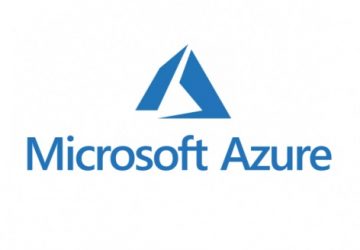-
Praneeth.Akondi started taking the course Probability & Statistics 2 days, 18 hours ago
Course

Probability & Statistics
This course provides learners with key Statistical concepts and will enable them to apply these concepts in their daily deliverable(s).
-
Praneeth.Akondi joined the group Probability & Statistics 2 days, 18 hours ago
-
SeethalS.Nair started taking the course Microsoft Azure: Level 0 6 days, 2 hours ago
Course

Microsoft Azure: Level 0
Microsoft Azure, formerly known as Windows Azure, is an ever-expanding set of cloud services to help your organization meet your business challenges. It is the freedom to build, manage and deploy applications on a massive, global network using your favorite tools and frameworks. With a range of cloud services, including compute, analytics, storage and networking, users can pick and choose from these services to develop and scale new applications, or run existing applications in the public cloud. The Azure platform aims to help businesses manage challenges and meet their organizational goals. It offers tools that support all industries — including e-commerce, finance and a variety of Fortune 500 companies – and is compatible with open source technologies. This provides users with the flexibility to use their preferred tools and technologies. In addition, Azure offers 4 different forms of cloud computing: infrastructure as a service (IaaS), platform as a service (PaaS), software as a service (SaaS) and serverless.
-
SeethalS.Nair joined the group Microsoft Azure:Level 0 6 days, 2 hours ago
-
Keerthik.V started taking the course Microsoft Azure: Level 0 6 days, 3 hours ago
Course

Microsoft Azure: Level 0
Microsoft Azure, formerly known as Windows Azure, is an ever-expanding set of cloud services to help your organization meet your business challenges. It is the freedom to build, manage and deploy applications on a massive, global network using your favorite tools and frameworks. With a range of cloud services, including compute, analytics, storage and networking, users can pick and choose from these services to develop and scale new applications, or run existing applications in the public cloud. The Azure platform aims to help businesses manage challenges and meet their organizational goals. It offers tools that support all industries — including e-commerce, finance and a variety of Fortune 500 companies – and is compatible with open source technologies. This provides users with the flexibility to use their preferred tools and technologies. In addition, Azure offers 4 different forms of cloud computing: infrastructure as a service (IaaS), platform as a service (PaaS), software as a service (SaaS) and serverless.
-
Keerthik.V joined the group Microsoft Azure:Level 0 6 days, 3 hours ago
-
Allan.Paul started taking the course Python Programming: Level 01 1 week, 5 days ago
Course

Python Programming: Level 01
Python is an interpreted, object-oriented, high-level programming language with dynamic semantics. Its high-level built in data structures, combined with dynamic typing and dynamic binding, make it very attractive for Rapid Application Development, as well as for use as a scripting or glue-language to connect existing components together.
-
Vishal.Krishnan completed the topic Importing Packages 1 week, 6 days ago
-
Vishal.Krishnan completed the topic Installation Guide 1 week, 6 days ago
-
Akshay.SomnathGite started taking the course Microsoft Azure: Level 0 1 week, 6 days ago
Course

Microsoft Azure: Level 0
Microsoft Azure, formerly known as Windows Azure, is an ever-expanding set of cloud services to help your organization meet your business challenges. It is the freedom to build, manage and deploy applications on a massive, global network using your favorite tools and frameworks. With a range of cloud services, including compute, analytics, storage and networking, users can pick and choose from these services to develop and scale new applications, or run existing applications in the public cloud. The Azure platform aims to help businesses manage challenges and meet their organizational goals. It offers tools that support all industries — including e-commerce, finance and a variety of Fortune 500 companies – and is compatible with open source technologies. This provides users with the flexibility to use their preferred tools and technologies. In addition, Azure offers 4 different forms of cloud computing: infrastructure as a service (IaaS), platform as a service (PaaS), software as a service (SaaS) and serverless.
-
Akshay.SomnathGite joined the group Microsoft Azure:Level 0 1 week, 6 days ago
-
Kajol.Nagar started taking the course Probability & Statistics 2 weeks, 4 days ago
Course

Probability & Statistics
This course provides learners with key Statistical concepts and will enable them to apply these concepts in their daily deliverable(s).
-
Kajol.Nagar joined the group Probability & Statistics 2 weeks, 4 days ago
-
Rohit.Mahamkali completed the lesson Introduction to Microsoft Azure 3 weeks, 3 days ago
Lesson

Introduction to Microsoft Azure
-
Arunachalam.N started taking the course Probability & Statistics 3 weeks, 4 days ago
Course

Probability & Statistics
This course provides learners with key Statistical concepts and will enable them to apply these concepts in their daily deliverable(s).
-
Arunachalam.N joined the group Probability & Statistics 3 weeks, 4 days ago
-
AdityaV.B completed the topic Assignment 3 weeks, 5 days ago
-
AdityaV.B completed the lesson Module 1: Why Statistics? + Data and Visualizations 3 weeks, 5 days ago
Lesson

Module 1: Why Statistics? + Data and Visualizations
-
Srinithiy.A started taking the course Microsoft Azure: Level 0 1 month ago
Course

Microsoft Azure: Level 0
Microsoft Azure, formerly known as Windows Azure, is an ever-expanding set of cloud services to help your organization meet your business challenges. It is the freedom to build, manage and deploy applications on a massive, global network using your favorite tools and frameworks. With a range of cloud services, including compute, analytics, storage and networking, users can pick and choose from these services to develop and scale new applications, or run existing applications in the public cloud. The Azure platform aims to help businesses manage challenges and meet their organizational goals. It offers tools that support all industries — including e-commerce, finance and a variety of Fortune 500 companies – and is compatible with open source technologies. This provides users with the flexibility to use their preferred tools and technologies. In addition, Azure offers 4 different forms of cloud computing: infrastructure as a service (IaaS), platform as a service (PaaS), software as a service (SaaS) and serverless.
-
Srinithiy.A joined the group Microsoft Azure:Level 0 1 month ago
- Load More

